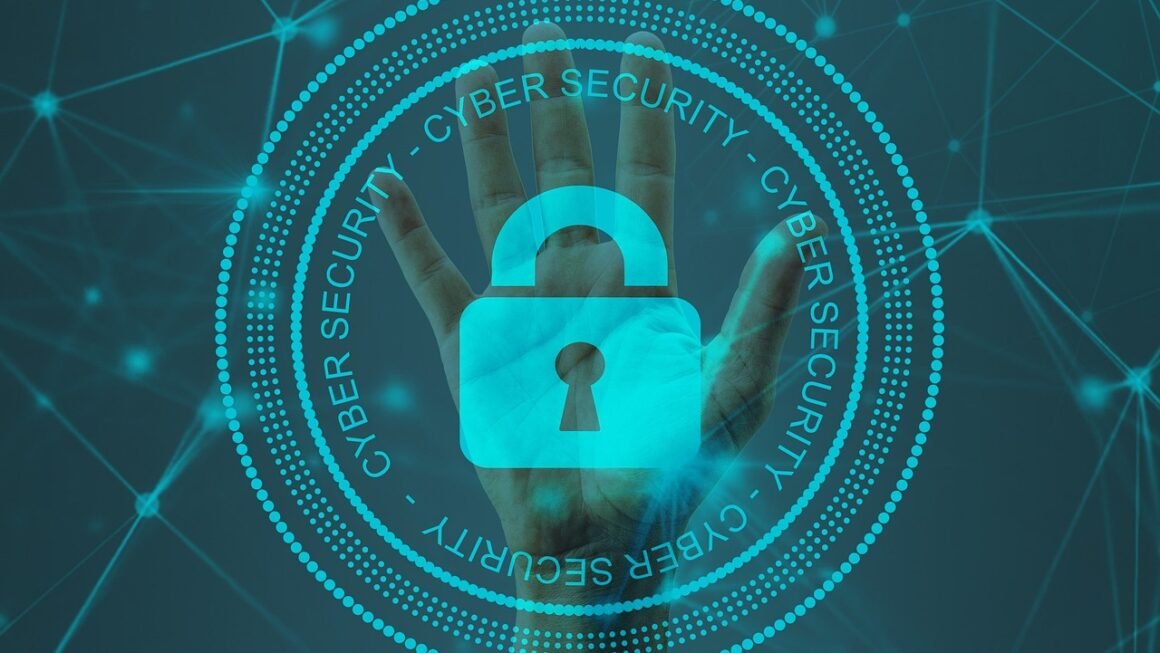Ransomware attacks are a nightmare scenario for any individual or organization. One minute you’re working normally, and the next, your files are encrypted, and you’re facing a ransom demand. Understanding what ransomware is, how it works, and how to protect yourself is more critical than ever in today’s digital landscape. This blog post provides a comprehensive overview of ransomware, offering actionable steps to mitigate your risk.
What is Ransomware?
Defining Ransomware
Ransomware is a type of malicious software (malware) that encrypts a victim’s files, rendering them inaccessible. The attackers then demand a ransom payment, typically in cryptocurrency, in exchange for the decryption key needed to restore the files. Ransomware attacks can target individuals, small businesses, large corporations, and even critical infrastructure.
How Ransomware Works: A Step-by-Step Process
The ransomware attack lifecycle typically involves several stages:
- Infection: Ransomware often infiltrates systems through phishing emails, malicious attachments, drive-by downloads, or vulnerabilities in software.
- Execution: Once executed, the ransomware may perform reconnaissance, identifying valuable files and network shares.
- Encryption: The ransomware encrypts the victim’s files using a strong encryption algorithm, making them unreadable. This usually involves deleting or renaming the original files.
- Ransom Note: A ransom note is displayed, explaining that the files have been encrypted and providing instructions on how to pay the ransom. This often includes a deadline for payment and a threat to permanently delete the decryption key if the deadline is missed.
- Payment (Optional): The victim can choose to pay the ransom. However, there’s no guarantee that paying the ransom will result in the recovery of the files.
Common Types of Ransomware
Several types of ransomware exist, each with its own characteristics and methods of operation. Some of the most well-known include:
- CryptoLocker: One of the earliest and most impactful ransomware variants, known for its widespread distribution and strong encryption.
- WannaCry: Famously exploited a vulnerability in older Windows systems (EternalBlue) to rapidly spread across networks.
- Ryuk: Often targets large organizations and demands high ransoms.
- REvil (Sodinokibi): Known for its sophisticated techniques and targeting of managed service providers (MSPs).
- LockBit: A ransomware-as-a-service (RaaS) model that allows affiliates to launch attacks using LockBit’s infrastructure.
Understanding the Risks and Impact
Financial Consequences
The financial impact of a ransomware attack can be devastating. It includes not only the potential ransom payment but also the cost of downtime, data recovery (even without paying the ransom), legal fees, and reputational damage. According to recent reports, the average ransomware payment has risen significantly in recent years.
Operational Disruption
Ransomware can bring business operations to a complete standstill. Encrypted files can disrupt critical processes, such as manufacturing, healthcare, and government services. For example, a hospital hit by ransomware might be unable to access patient records, delaying treatment and potentially endangering lives.
Reputational Damage
A ransomware attack can severely damage an organization’s reputation. Customers may lose trust in the organization’s ability to protect their data, leading to a loss of business. Public disclosure of a ransomware attack can lead to negative media coverage and further erode public confidence.
Data Loss
Even if the ransom is paid, there’s no guarantee of full data recovery. Decryption keys may be faulty or incomplete, leading to permanent data loss. Furthermore, some ransomware variants may corrupt data during the encryption process, making recovery impossible.
Prevention: How to Protect Yourself from Ransomware
Implementing a Robust Backup Strategy
A comprehensive backup strategy is your first line of defense against ransomware. Regularly back up your critical data to an offline location (e.g., external hard drive or cloud storage that is not constantly connected to your network). Test your backups regularly to ensure they can be restored successfully. This is arguably the most important preventative measure you can take.
- 3-2-1 Rule: Follow the 3-2-1 backup rule: keep three copies of your data on two different types of storage media, with one copy stored offsite.
- Immutable Backups: Consider using immutable backups, which cannot be modified or deleted after creation, providing an extra layer of protection against ransomware.
Strengthening Cybersecurity Measures
Implement a layered security approach to protect your systems from ransomware infections.
- Firewall: Configure a firewall to block unauthorized access to your network.
- Antivirus Software: Use a reputable antivirus solution with real-time scanning capabilities. Keep the software updated with the latest virus definitions.
- Intrusion Detection/Prevention System (IDS/IPS): Deploy an IDS/IPS to detect and prevent malicious activity on your network.
- Endpoint Detection and Response (EDR): Implement an EDR solution for advanced threat detection and response on individual endpoints.
- Multi-Factor Authentication (MFA): Enable MFA for all user accounts, especially those with privileged access.
- Patch Management: Regularly patch operating systems, software applications, and firmware to address known vulnerabilities. Vulnerabilities are a common entry point for ransomware attacks.
- Network Segmentation: Segment your network to limit the lateral movement of ransomware within your organization.
Employee Training and Awareness
Educate your employees about ransomware threats and best practices for avoiding infection. Human error is a significant factor in many ransomware attacks. Conduct regular training sessions and phishing simulations to raise awareness.
- Phishing Awareness: Teach employees how to identify phishing emails and suspicious attachments.
- Safe Browsing Practices: Instruct employees to avoid clicking on suspicious links or downloading files from untrusted sources.
- Password Security: Emphasize the importance of strong, unique passwords and the dangers of password reuse.
Security Audits and Vulnerability Assessments
Conduct regular security audits and vulnerability assessments to identify weaknesses in your security posture. Engage with security professionals to perform penetration testing and identify potential attack vectors. Address any identified vulnerabilities promptly.
Responding to a Ransomware Attack
Incident Response Plan
Develop a comprehensive incident response plan to guide your actions in the event of a ransomware attack. The plan should outline the steps to take to isolate infected systems, contain the spread of the ransomware, and restore operations. This plan should be tested regularly.
Isolating Infected Systems
Immediately isolate infected systems from the network to prevent the ransomware from spreading. Disconnect the affected computers from the internet and any shared drives.
Reporting the Incident
Report the ransomware attack to the appropriate authorities, such as law enforcement agencies (e.g., the FBI’s Internet Crime Complaint Center (IC3)) and your local data protection authority. Reporting the incident can help track the attackers and prevent future attacks.
Evaluating the Ransom Demand
Carefully evaluate the ransom demand and consider the potential risks and benefits of paying the ransom. Consult with cybersecurity experts to assess the likelihood of data recovery and the potential for further attacks. Law enforcement agencies generally advise against paying the ransom, as it encourages further criminal activity and does not guarantee data recovery.
Data Recovery Options
Explore all available data recovery options. Check for available decryption tools or utilities that may be able to decrypt your files without paying the ransom. Contact cybersecurity experts who may be able to assist with data recovery.
Conclusion
Ransomware is a serious threat that requires a proactive and comprehensive approach to security. By understanding how ransomware works, implementing robust security measures, and educating your employees, you can significantly reduce your risk of becoming a victim. Remember that prevention is always better than cure, and a well-prepared organization is far less likely to suffer significant damage from a ransomware attack. Regular backups, strong cybersecurity defenses, and employee training are essential components of a strong ransomware defense strategy. Stay vigilant and keep your systems up to date to stay one step ahead of the attackers.



